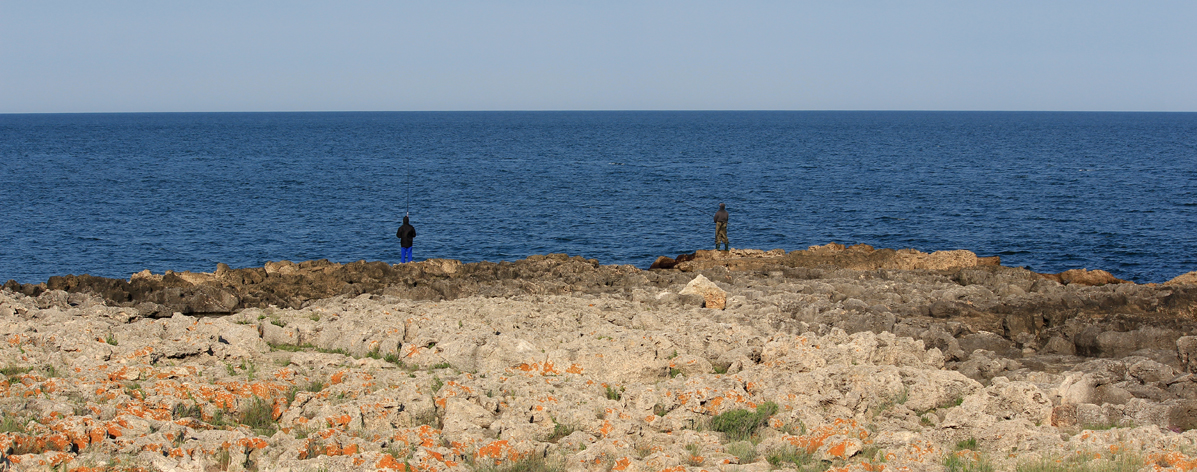
A coastal field trip was recently carried out along the 432 km Bulgarian Black Sea coast focused to determine scenic sensitivity to natural processes and human pressure. In total, 16 sites respectively located in Burgas (9), Varna (3) and Dobrich (4) districts were field-tested during May and June (2021). The study was performed in collaboration between University of Cadiz and Center for Coastal and Marine Studies under a Ph.D. project: “Sensitive coastal beauty: an innovative approach to assess scenic sensibility to human and natural processes, in a Climate Change context, at very attractive sites along the coasts of Italy, Balearic Islands (Spain), Northern France and Bulgaria”.
The field trip was conducted by Alexis Mooser, PhD student in Environmental Phenomena and Risks Program (Universities of Parthenope and Cadiz), Parthenope University of Naples, Italy and University of Cadiz, Spain. CCMS experts Dr. Margarita Stancheva and Dr. Hristo Stanchev took active participation in the field trip in particular along the North Bulgarian coast.

In a first step, aesthetic aspect is quantified according to the well-known Coastal Scenic Evaluation System (CSES) method, based on the evaluation of 26 natural and human parameters by means of weighting matrices parameters and fuzzy logic mathematics. Among the parameters, the CSES considers (i) 18 physical components: Cliff (height, slope, features), Beach face (width, colour, type), Rocky shore (slope, extent, roughness), Dunes, Valley, Landform, Tides, Coastal landscape features, Vistas, Water colour and clarity, Vegetation cover and Debris – and (ii) 8 human aspects – Noise disturbance, Litter, Sewage evidence, Built and Non-built environment, Access type and Utilities. This enabled to calculate an evaluation index value (D) for each site, allowing their classification into 5 five distinct classes ranging from Class I, extremely attractive natural sites with very high scenic values (D≥0.85) to Class V, very unattractive urban sites with intensive development (D<0). The higher is the D value, the more attractive is scenery. In this study, 7 sites were included in Class I, 8 to Class II and 1 to Class III. Further, CSES allows to point out how sites scenic quality may be improved by judicious interventions relating to physical and human parameters.
In a second step, the research aims to assess sites sensitivity to natural processes and human pressure by adopting a novelty method based on the calculation of three Coastal Scenic Sensitivity Indexes (CSSI): a natural sensitivity index (NSI), a human sensitivity index (HSI) and a total sensitivity index (TSI), as a result of the combination of the two previous indexes. Thereafter, investigated sites will be classified into three sensitive groups (not sensitive; sensitive; very sensitive). Hence, the aim is (i) to determine the intrinsic sensitivity of sites to erosion/flooding processes in a Climate Change context considering sites physical characteristics, forcing variables and regional trends of Storm Surge/Sea Level Rise; and (ii) to quantify the level of human pressure taking into account access difficulty, protected areas management categories and local trends of tourism intensity. For local managers, it could represent a powerful tool to anticipate medium and long-term environmental degradation and tourism growth scenarios, identify priorities in term of management/policies and, therefore, increase resilience of great scenic beauty sites.
The impressive coastal landscape diversity of the Bulgarian coastline makes this region an ideal field to assess. Indeed, Bulgaria exhibits a splendid variety of sceneries from vast plains constituted by coastal lakes (e.g., Durankulak, Shabla) (Figure 1), extensive sandy coastlines surrounded by remarkable developed dune systems (e.g., Kamchia, Arkutino) (Figure 1), shore platform (e.g., Shabla) and high cliff systems (e.g., Rakitnika) to impressive oaks pristine forest located in the southern coast of Burgas (e.g., Silistar, Lipite) (Figure 1). Some places clearly stand out from the rest with very high scenic values such as Ropotamo (D: 1.12), Lipite (1.04), Rakitnika (1.00), Kamchia (0.99) or Kara Dere (0.98). Obviously, coastal scenic beauty is a vital component for tourism economy but it is not a renewable resource.

Fifure 1: Shabla lakes located along the northern coast (A); Natural beach of Lipite surrounded by oaks massif forests dating from Tertiary (B); Kamchia, the most extensive sandy beach of Bulgaria (C). Photo credits: Alexis Mooser
Beach management is a very complex process that demands a holistic view but preserve the remaining undeveloped coast, avoiding irreversible damages, has turned into a global challenge for coastal managers. It would be interesting to promote and preserve sites of great scenic relevance, under the umbrella of sustainable tourism, by establishing, for example, a coastal Heritage award (e.g., Class I sites) or by publishing a pocket travel guide of most attractive investigated sites.
